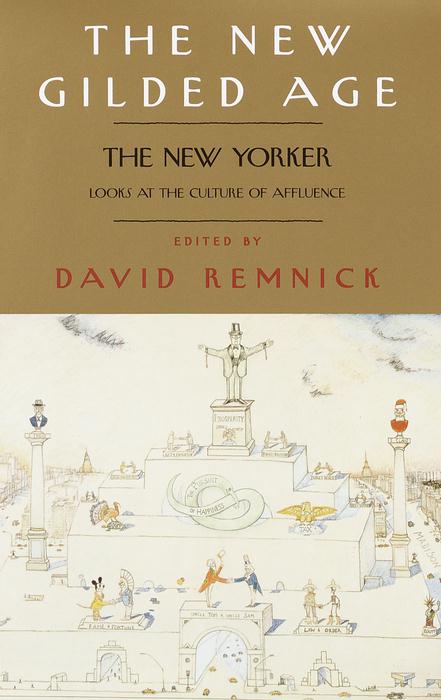
The New Gilded Age
The New Yorker Looks at the Culture of Affluence
کتاب های مرتبط
- اطلاعات
- نقد و بررسی
- دیدگاه کاربران
نقد و بررسی

October 30, 2000
These essays, all of which were written during this time of unprecedented American prosperity, and culled by Remnick from the New Yorker, give readers the opportunity to view--up close and personal--the current economic boom's effect on the average and not-so-average among us. Notables profiled (in a section entitled "The Barons") include ber-developer Donald Trump and Microsoft founder Bill Gates, who give readers the opportunity to ponder the different ways people define what, exactly, constitutes "rich." For Gates, money is very much a by-product of his desire to create hegemony. For Trump, it's a fulfillment of the adage that he who dies with the most--and most ostentatious--toys, wins. Sections entitled "The Web" and "The Life" give the newly rich the skinny on how and where to spend a fortune while not looking as if they've done so. Remnick doesn't exclude those not blessed by the boom economy. He presents the recently paroled Jessica, a Hispanic woman whose looks and vulnerability were her ticket to a brutal stint as the girlfriend of a Bronx drug lord; and we also see James Wilcox, whose widely acclaimed comic novels have failed to bring in enough money to keep him very far from eating in the soup kitchen where he regularly volunteers. Readers don't need to be rich to enjoy this volume, but they need a healthy curiosity about the impact of money--and its absence.

October 15, 2000
America 2000 and wealth. Donald Trump and Bill Gates. Credit card debt and sweatshops. These 33 essays, collected from The New Yorker, are by authors who were sent out to "take the pulse" of life during a period of remarkable economic change. Joan Didion investigates why Martha Stewart inspires such a following. John Cassidy portrays Alan Greenspan, "the Babe Ruth of our economic policy," speaking in his "best Woody Allen manner." David Brooks engages in name-dropping via e-mail. John Updike gladly accepts change from a stepson who didn't like it jangling in his pocket. Arthur Krystal defends those who don't want to work themselves to death to make money. Although the collection may be a little heavy on the moneymakers' side, it is an insightful look at American society today. Remnick, editor of The New Yorker, has put together two other anthologies of New Yorker writings: Wonderful Town and Life Stories (both LJ 2/1/00). Recommended for academic and public libraries.--Nancy P. Shires, East Carolina Univ., Greenville, NC
Copyright 2000 Library Journal, LLC Used with permission.

November 15, 2000
From David Brooks' tongue-in-cheek "Code of Financial Correctness" for those seeking advice about how to spend a great deal of money without appearing vulgar to the superbly energetic profiles of the "barons" Greenspan, Trump, Gates (under siege), and Stewart, yes Martha, portrayed with vivifying respect by the brilliant and skeptical Joan Didion, this potent collection captures the mercantile madness of the last decade. It also offers one ray of hope in a hurried and greedy world: the " New Yorker" is still home to its prized, impeccable style that balances wit with depth in essays that are at once delectable and galvanizing. Editor Remnick covers the financial spectrum with Calvin Trilling's look at an insider-trading scheme, David Denby's hectic immersion in the stock market, and a wealth of excellent and surprising essays about the Internet, real estate, Seattle's antiglobalization protests, and the mania for Manolo Blahnik's high heels by such adept and articulate observers as William Finnegan, Malcolm Gladwell, Susan Orlean, and Michael Specter.(Reprinted with permission of Booklist, copyright 2000, American Library Association.)

























دیدگاه کاربران